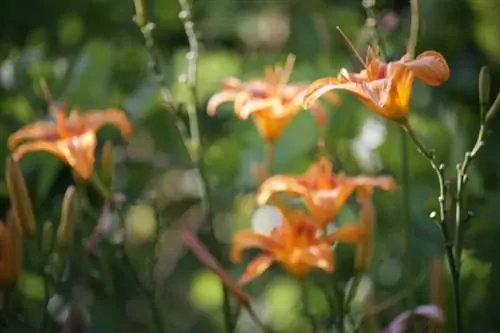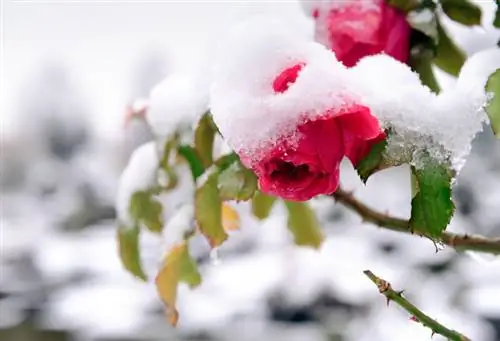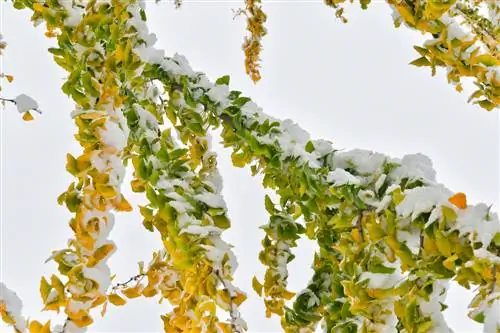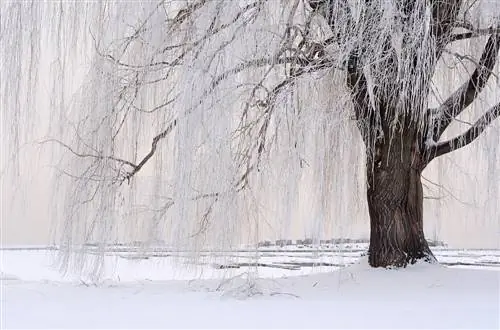- Author admin [email protected].
- Public 2023-12-16 16:46.
- Last modified 2025-01-23 11:21.
The Ginkgo is not only considered easy to care for, it is also hardy and can survive Central European winter temperatures without any problems, although only after a few years of life. Beforehand it is a little sensitive to blazing sun and hard frost.

How should you protect a ginkgo tree in winter?
To protect a young ginkgo tree in winter, it is recommended to overwinter it frost-free in a pot or bucket at ideal temperatures of around + 5 °C. After a few years outdoors, the ginkgo is hardy and does not need any special winter protection except for potted plants.
To avoid frost damage to your young ginkgo, we recommend frost-free wintering. Ideally, you should cultivate the tree in a pot or bucket for a few years. This saves you the work of planting and transplanting in spring and autumn.
Overwintering potted plants
A ginkgo in a pot or bucket should overwinter frost-free. If the winter quarters are too warm for your ginkgo, it may sprout again quite early in the year. However, these shoots are not very robust. It is therefore important to avoid this early sprouting by keeping the area cool. Temperatures around +5 °C are ideal.
If you don't have a suitable winter quarters (winter garden, cellar or greenhouse), you can also overwinter your ginkgo in a protected location outside in the garden. However, the root ball must be well protected from frost by wrapping the pot (blanket (€38.00 on Amazon), jute bag, bubble wrap).
The most important things in brief:
- sensitive to frost in the first few years
- Frost-free wintering recommended
- later very well tolerated by frost down to around -28 °C
- then no special winter protection is necessary, exception: potted plants
- Protect root balls from frostbite by wrapping them
- occasional frostbite on young shoots
Tip
If you only plant your ginkgo outdoors after a few years, then it will survive normal Central European winters even without special winter protection.






